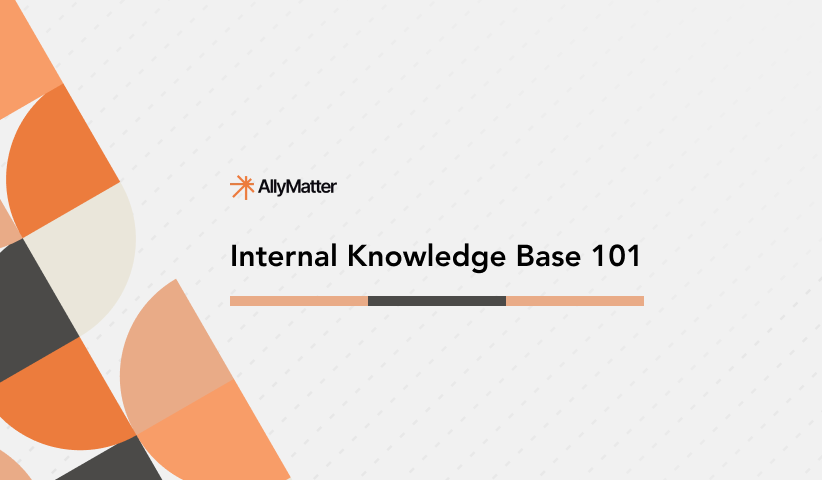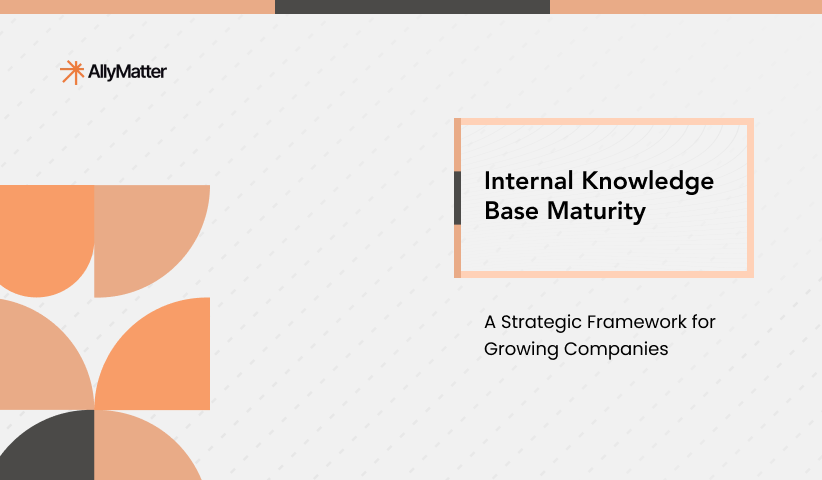The most valuable asset rapidly scaling companies often mismanage? Their collective knowledge. According to Gartner research, 47% of digital workers struggle to find the information needed to effectively perform their jobs, a problem that intensifies as organizations scale.
Every successful growth phase multiplies your information assets exponentially. New teams generate procedures, customer interactions create support documentation, and stakeholders demand more comprehensive reporting. Without proper scaling mechanisms, this knowledge explosion quickly becomes unmanageable.
The distinction between companies that scale smoothly versus those that struggle often comes down to how effectively their knowledge infrastructure adapts. Let’s examine the essential features that transform a basic internal knowledge base into a scalable foundation for growth.
The invisible cost of outgrowing your documentation systems
Most companies start simple: shared drives, email threads, chat messages, and basic wiki tools. These approaches inevitably fail as organizations scale because they:
- Create information silos that multiply with each new department or team.
- Force employees to waste time searching through multiple systems.
- Make updating and maintaining documentation increasingly burdensome.
- Lack controls needed for compliance and security as your company matures.
Consider a rapidly scaling SaaS company where product documentation might exist across multiple platforms, the product roadmap appearing in different versions across shared drives, wikis, and team channels. New team members could easily access outdated information, leading to misaligned decisions and wasted development resources.
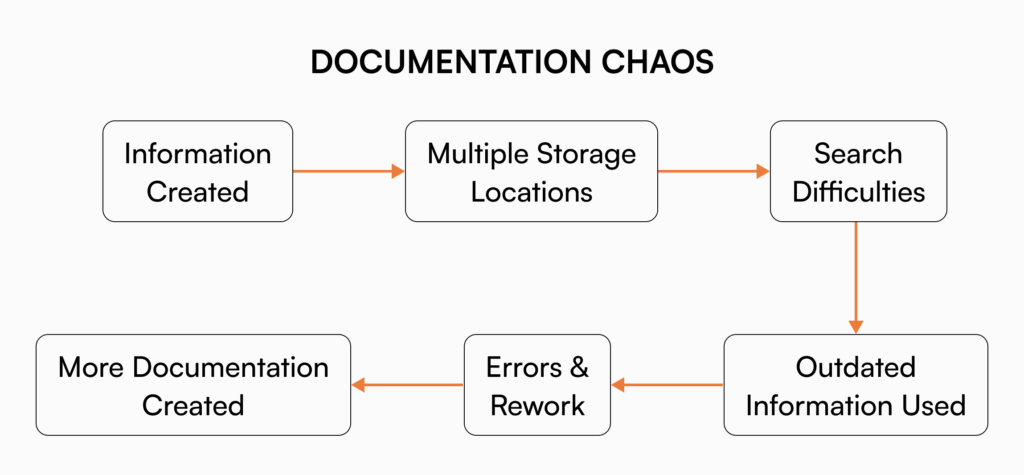
Smart search and contextual discovery that improves with scale
As your knowledge base grows, basic keyword search becomes insufficient. The ability to find exactly what you need becomes critical when you have thousands of documents instead of dozens. McKinsey research shows that employees spend nearly 20% of their workweek looking for internal information, time that multiplies exponentially in poorly organized systems.
What to look for:
- Intelligent search that understands context and user intent
- Search functions that work across different document types and formats
- The ability to find information within documents, not just document titles
- Results that adapt based on the user’s role and previous searches
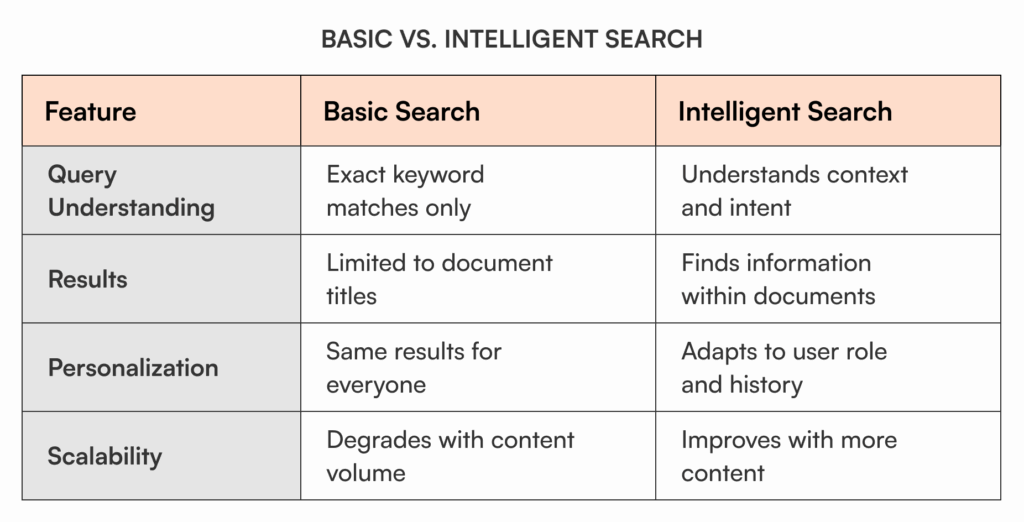
In healthcare technology environments, advanced search capabilities can help clinical staff locate critical procedure documentation in seconds rather than minutes. It’s a significant advantage in patient-facing roles where rapid access to accurate information directly impacts care quality.
Intelligent organization that prevents chaos as content grows
Without proper organization, adding more content to your knowledge base simply creates digital clutter. Smart categorization becomes increasingly valuable as your document library expands.
What to look for:
- Customizable tagging systems that adapt to your organizational structure
- Automated categorization suggestions that maintain consistency
- Metadata management that makes content discoverable in multiple ways
- Department-specific organization options that make sense to different teams
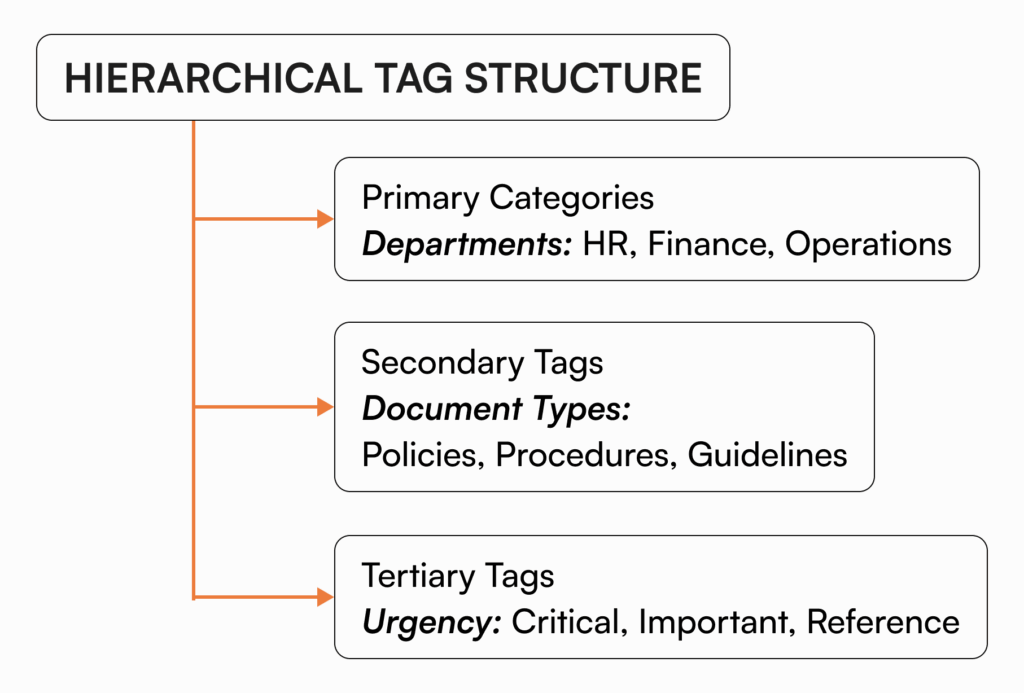
Financial services organizations can leverage intelligent tagging to organize compliance documentation by department, regulation type, and update frequency. This approach enables teams to quickly identify and update all affected documents when regulations change, potentially transforming weeks of manual review into a streamlined, systematic process.
Granular access control that evolves with your organizational structure
As companies grow, their organizational structures become more complex. Your knowledge base needs access controls that can adapt to these changes without creating bottlenecks.
What to look for:
- Role-based permissions that align with your org chart
- Document-level access controls for sensitive information
- The ability to share specific content with external partners or clients
- Visibility settings that can be adjusted as teams and roles evolve
Sarah, an operations manager at a fast-growing fintech startup, needed to share vendor payment procedures with her remote team while keeping sensitive financial data confidential. With granular access controls, she could share specific workflow steps with team members while restricting access to bank account details and approval thresholds, enabling collaboration without compromising security.
Compliance and approval workflows that maintain quality at scale
Document creation and updates need oversight, but manual approvals quickly become major bottlenecks as organizations grow. Automated workflows solve this problem.
What to look for:
- Configurable approval flows for different document types
- Automatic routing to the appropriate approvers
- Built-in signature capabilities for formal sign-offs
- Notification systems that prevent documents from stalling in review
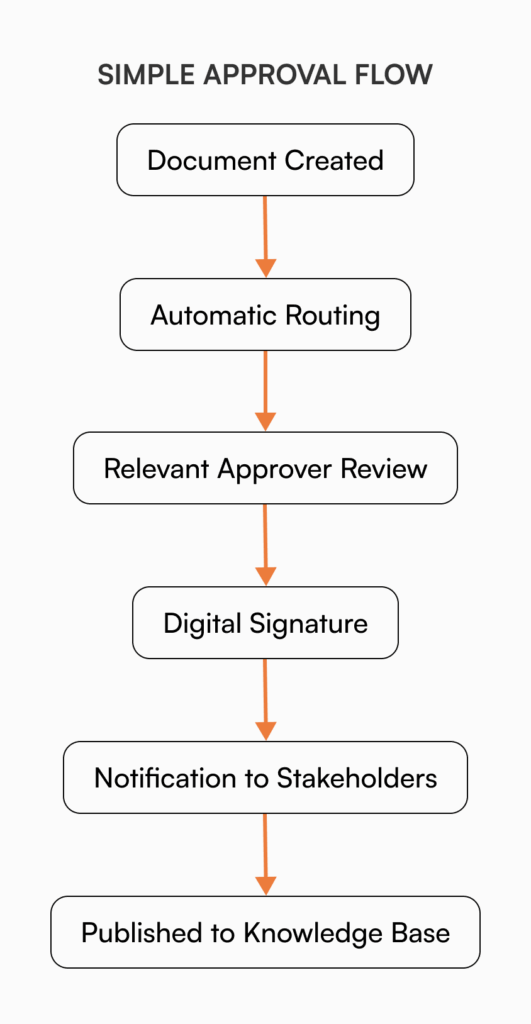
Legal services providers can implement automated approval workflows for client-facing documents to transform what might otherwise require manual email tracking. These workflows can reduce review cycles from days to hours while maintaining necessary oversight, particularly valuable as the volume of documents requiring review grows with the business.
Comprehensive audit trails for accountability as teams expand
In growing organizations, tracking who changed what and when becomes essential for both operational continuity and compliance requirements.
What to look for:
- Complete version history of all documents
- Detailed logs of edits, approvals, and access events
- The ability to compare different versions of the same document
- Options to restore previous versions when needed
For example, during regulatory audits, pharmaceutical companies may need to demonstrate compliance with strict documentation requirements. Comprehensive audit trails can provide the ability to quickly show complete histories of standard operating procedures, including approval records and implementation timestamps, potentially turning stressful audit situations into straightforward verification processes.
AI and LLM integration: Scaling knowledge work with intelligent assistance
Artificial intelligence is transforming how organizations manage growing knowledge bases by reducing manual work and improving content quality.
What to look for:
- AI-powered content suggestions and improvements
- Automated tagging and categorization of new documents
- Smart recommendations of relevant content to users
- Tools that help identify outdated or inconsistent information
Technology companies can leverage AI assistance to maintain consistent documentation even as products and teams evolve rapidly. These intelligent tools can flag potential inconsistencies between documents and suggest updates when related content changes, helping maintain knowledge quality without proportionally increasing the maintenance workload.
Also read: Make Your Knowledge Base Ready for LLMs & AI
Built-in signatures and legal acknowledgment for seamless governance
As organizations scale, tracking who has reviewed and acknowledged critical policies becomes increasingly complex but even more necessary.
What to look for:
- Multiple acknowledgment methods (in-platform buttons, e-signatures)
- Tracking systems for monitoring completion status
- Integration with third-party e-signature tools for formal requirements
- Automated reminders for pending acknowledgments
Educational institutions needing to ensure faculty review of updated teaching protocols can benefit from built-in acknowledgment tools. These features can allow administrators to track completion in real-time rather than manually collecting confirmations via email, an efficiency that becomes increasingly valuable as the organization scales.
Moving forward: Knowledge that grows with you
The right knowledge base doesn’t just store information; it evolves alongside your organization, supporting growth rather than hindering it. As you evaluate knowledge management solutions, prioritize features that will remain valuable as your company scales. Evaluate your current knowledge base by asking:
- Can new employees find critical information within 2 minutes?
- Do approval processes complete without manual follow-up?
- Can you instantly identify who accessed sensitive documents?
- Does your search improve as content volume increases?
Remember that the true cost of outgrowing your knowledge management system isn’t just the price of replacement; it’s the accumulated inefficiency, errors, and frustration experienced along the way.
Key takeaways:
- Look for search capabilities that improve as content volume increases.
- Prioritize intelligent organization tools that prevent digital clutter.
- Choose flexible access controls that adapt to organizational changes.
- Implement automated workflows that prevent approval bottlenecks.
- Select solutions with comprehensive audit trails for accountability.
- Consider AI assistance for maintaining quality at scale.
How AllyMatter supports scalable knowledge management
AllyMatter addresses these scaling challenges through intelligent features designed for growing organizations. Our platform combines smart search capabilities with automated workflows and granular access controls, ensuring your knowledge infrastructure strengthens rather than burdens your growth.
Key capabilities include automated approval routing, comprehensive audit trails, AI-powered organization, and built-in signature capabilities—all designed to maintain knowledge quality and accessibility as your team expands.
Join our waitlist to be among the first to experience knowledge management that truly scales with your organization.
Frequently asked questions
What’s the difference between a basic knowledge base and a scalable one?
A basic knowledge base stores information but becomes harder to navigate as content grows. A scalable knowledge base includes intelligent search, automated organization, and workflows that actually improve performance as your organization expands.
How do I know when my current knowledge management system needs upgrading?
Key indicators include employees spending excessive time searching for information, outdated documents causing errors, difficulty maintaining consistent processes across teams, and lack of proper access controls as your organization grows.
What features should I prioritize when selecting a knowledge base for a growing company?
Focus on intelligent search capabilities, flexible access controls, automated approval workflows, comprehensive audit trails, and AI-powered organization tools that will scale with your team size and content volume.
How can automated workflows prevent bottlenecks in document management?
Automated workflows route documents to appropriate approvers based on content type and department, eliminating manual email tracking and ensuring consistent review processes even as your organization becomes more complex.
What role does AI play in scaling knowledge management?
AI helps maintain content quality by suggesting improvements, automatically categorizing documents, identifying outdated information, and providing relevant content recommendations to users based on their roles and search patterns.
